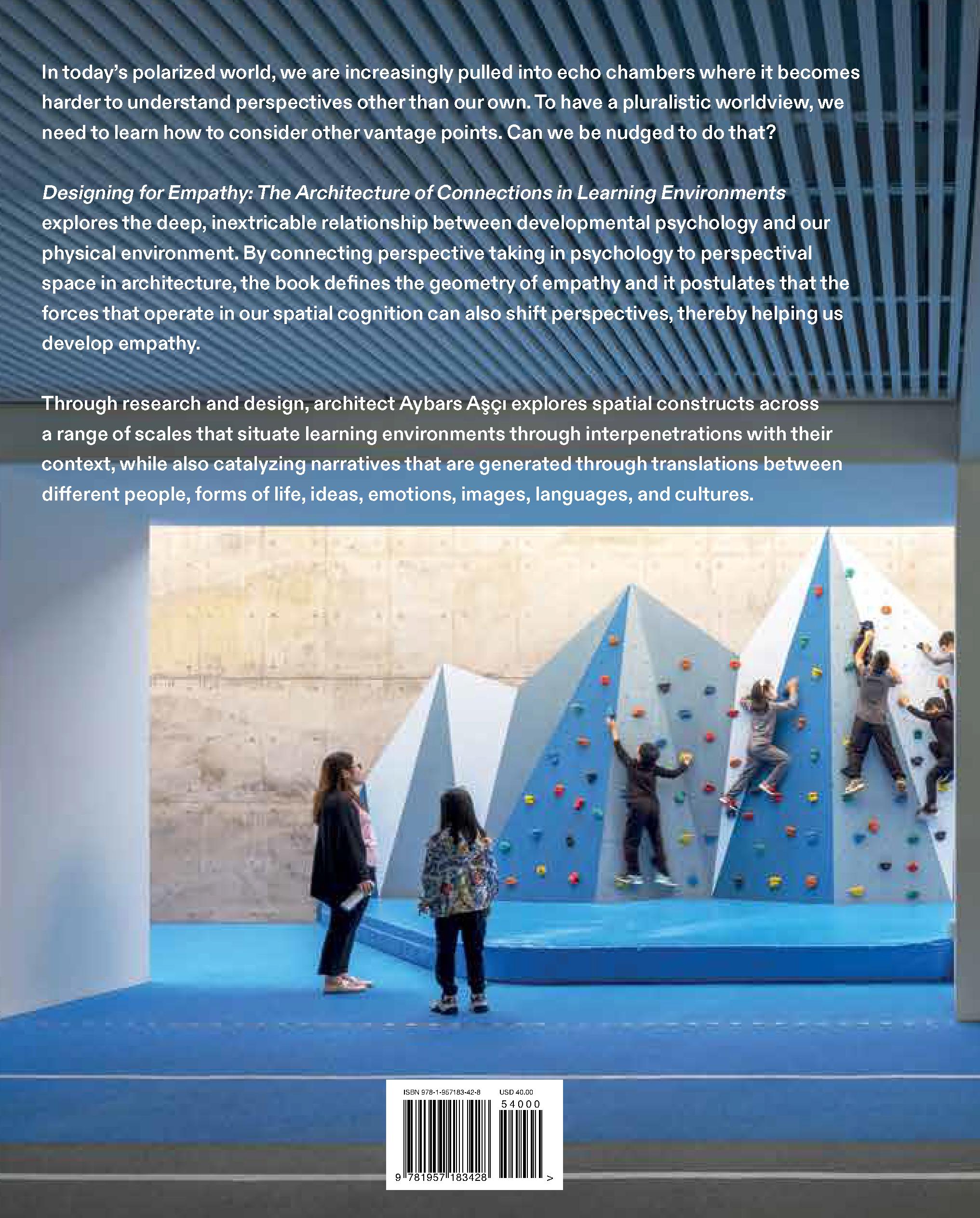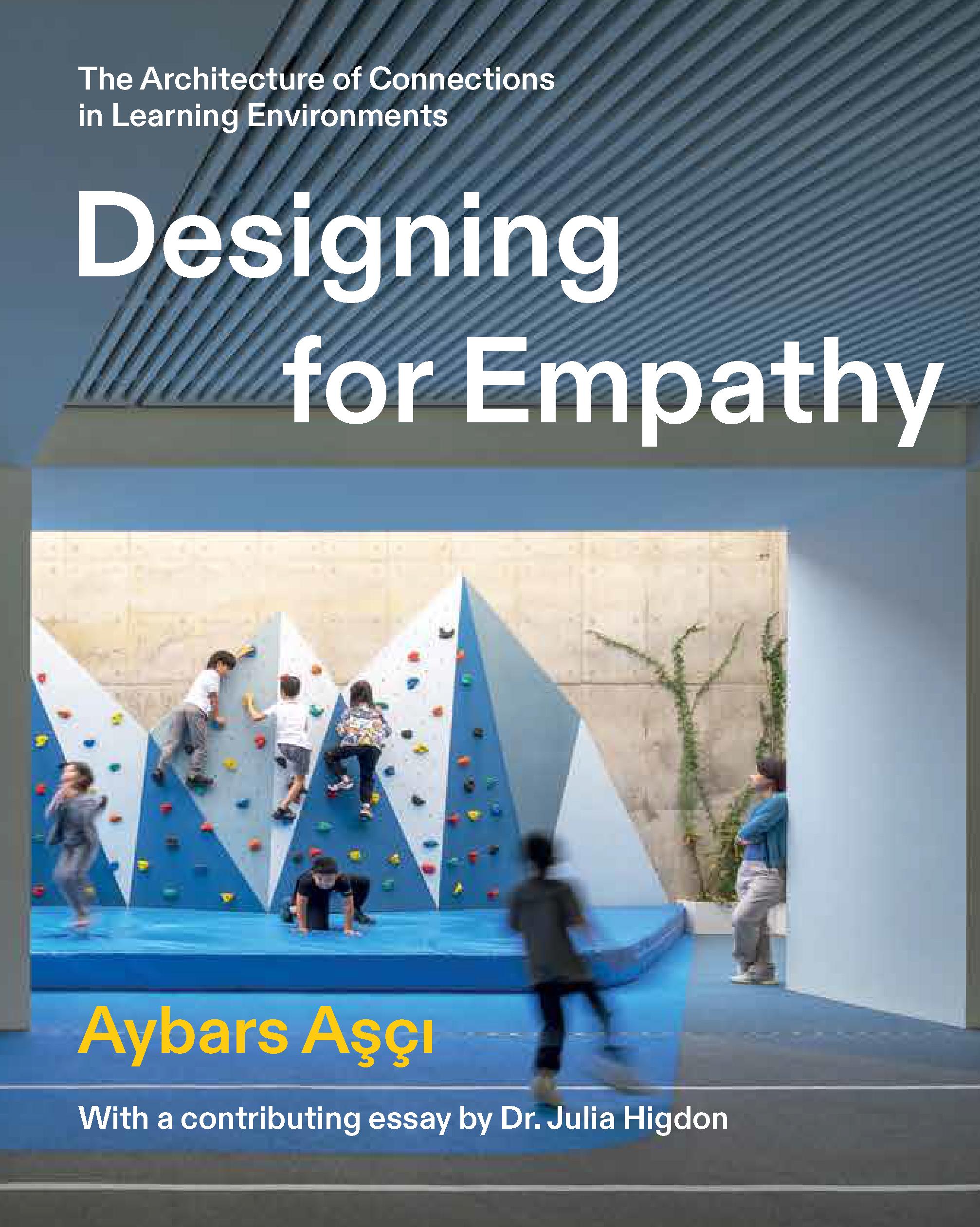




In 2016, I was invited to meet the leadership team of a pre-K through 12th grade school. They asked me to become their “global design architect,” collaborating on multiple campuses that were at different stages of development. Since then, the complexity of the design challenges we have been tackling has varied from large-scale campus planning to furniture design. During our research, the discussions we had with educators repeatedly touched on one key concept: empathy.
In development theory, the importance of empathy is frequently emphasized, but in architectural discourse empathy is much less studied. One reason may be, as architecture theorist Juhani Pallasmaa argues, that “geometric configurations are easier to imagine than the shapeless and dynamic acts of life and the ephemeral feelings evoked by architecture.”1 The origins of the discussions of empathy in architecture, however, can be traced back to the nineteenth-century German philosophy of aesthetics, where the concept of empathy originated.2
The term Einfühlung—translated as “feeling into”—was coined in the early 1870s by philosopher Robert Vischer in his dissertation on emotional projection.3 According to Vischer, Einfühlung describes unconscious projections of the body and soul into the form of the object.4 For instance, according to Vischer, the pleasure we take from observing horizontal lines— for example, watching the horizon—is related to the horizontal position of our eyes, or similarly, our appreciation of symmetry is because it is analogous to our body.5 A few decades later, Theodor Lipps popularized a psychological
1.1 (Facing page) Avenues Shenzhen Early Learning Center

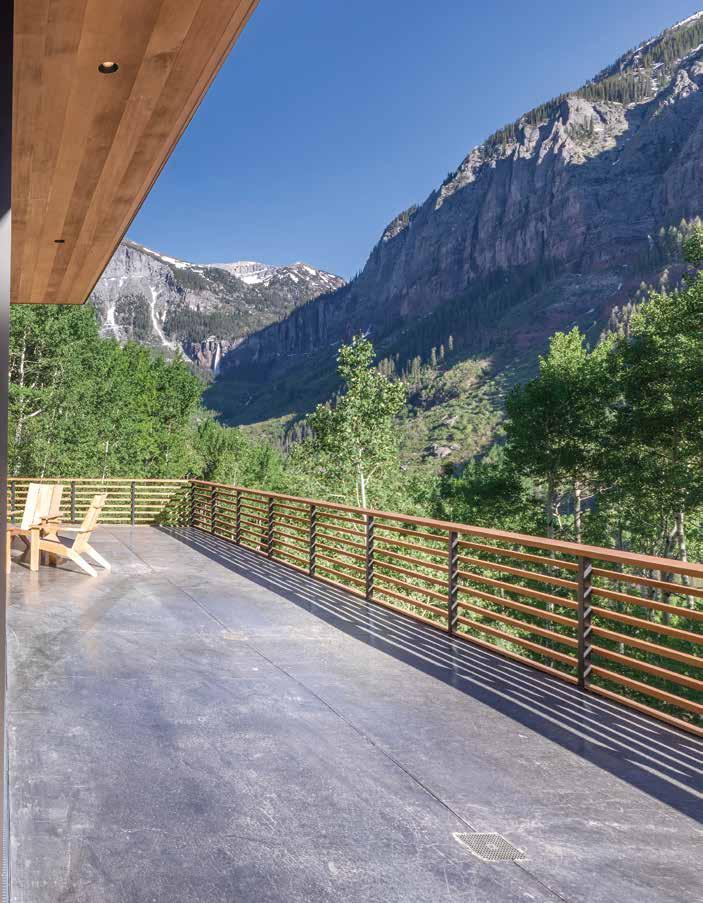

“Look again at that dot. That’s here. That’s home. That’s us. On it everyone you love, everyone you know, everyone you ever heard of, every human being who ever was, lived out their lives. The aggregate of our joy and suffering, thousands of confident religions, ideologies, and economic doctrines, every hunter and forager, every hero and coward, every creator and destroyer of civilization, every king and peasant, every young couple in love, every mother and father, hopeful child, inventor and explorer, every teacher of morals, every corrupt politician, every ‘superstar,’ every ‘supreme leader,’ every saint and sinner in the history of our species lived there—on a mote of dust suspended in a sunbeam.
“The Earth is a very small stage in a vast cosmic arena. Think of the rivers of blood spilled by all those generals and emperors so that, in glory and triumph, they could become the momentary masters of a fraction of a dot. Think of the endless cruelties visited by the inhabitants of one corner of this pixel on the scarcely distinguishable inhabitants of some other corner, how frequent their misunderstandings, how eager they are to kill one another, how fervent their hatreds.
“Our posturings, our imagined self-importance, the delusion that we have some privileged position in the Universe, are challenged by this point of pale light. Our planet is a lonely speck in the great enveloping cosmic dark. In our obscurity, in all this vastness, there is no hint that help will come from elsewhere to save us from ourselves.
“The Earth is the only world known so far to harbor life. There is nowhere else, at least in the near future, to which our species could migrate. Visit, yes. Settle, not yet. Like it or not, for the moment the Earth is where we make our stand.
“It has been said that astronomy is a humbling and character-building experience. There is perhaps no better demonstration of the folly of human conceits than this distant image of our tiny world. To me, it underscores our responsibility to deal more kindly with one another, and to preserve and cherish the pale blue dot, the only home we’ve ever known.”
— Carl Sagan, Pale Blue Dot, 1994
2.1 (Facing page) Planet Earth is visible as a bright speck within the sunbeam just right of center and appears softly blue.


the sixteenth century, in Albrecht Dürer’s depiction of a perspective machine (Figure 3.10). By demonstrating how the lines of projections flatten three dimensionality onto paper, thus creating an image of that three-dimensional object seen from a vantage point, Dürer’s machine shows how to correctly construct a perspectival drawing. By contrast, McCall’s film puts us inside the perspective machine, into the space of projections, and thus makes the vantage point irrelevant. Its irrelevancy, though, is not because the vantage point disappears; in fact, it does not. The 16-mm projector is placed as the only physical object in the room, reminding us of its presence. What becomes important is not the image projected on the screen, but our experience of the projection process. In other words, in McCall’s film, the visual construct from a single vantage point is proliferated to multiple vantage points, and by this our spatial experience shifts away from its egocentric frame of reference.


Inspired by McCall’s films, we created a space defined by conical projections for a small art pavilion project in Doha. The three cones that frame the sky are countered by an inverse cone from a reflective pool opening toward the sky. (Figure 3.11) The interplay of the conical projections puts the observer in a space of projections, juxtaposing the individual’s cone of vision with the multiple conical projections that define the space.
3.36 Diagram showing the juxtapositions of the plane of tilt, the plane of balance, and the upside-down oculus.
3.37 (Top) Interior rendering of the Exhibition Hall showing the upside-down oculus looking at the reflecting pool; (below) exterior view, looking at the upside-down oculus and the reflecting pool.
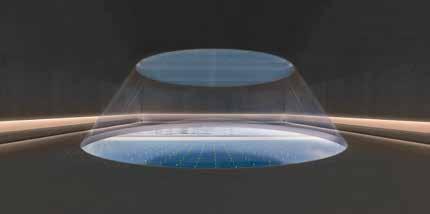

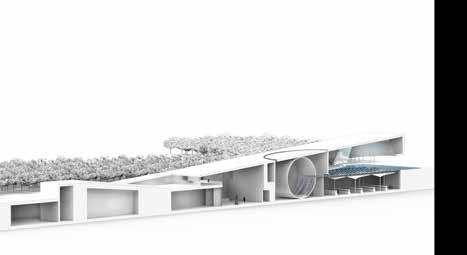

According to Piaget, perturbation or conflict is “the most influential factor in acquiring new knowledge structures.”43 In fact, he argues, it is only through continuous equilibration of disequilibria that we develop better cognitive constructs.
The cylindrical space of the Hall of Harmony, the oblique plane of the museum, and the upside-down oculus are all spatial constructs that challenge the established norms of our canonical position, and hence demand the visitor to create a new L-space, a new meaning of balance. The dissonance in space requires the visitor to continuously search for equilibrium, and thereby, as Piaget argued, allows the development of better cognitive constructs. In this process, the emotional empathy that develops out of our grief deepens into taking cognitive perspectives toward loss, remembrance, and our collective responsibilities in the face of social disasters.
(Above) Section axonometric through the Enshrinement Space, Reflecting Pool and Exhibition Hall; (Below) 416 Memorial Park & Building view from the park that shows the tilting plane that cantilevers over the reflecting pool.

We move, even when we stand still. Our eyes blink, our hearts beat, our lungs contract and expand, our arms twitch, even in the most steady-state moment. Absolute stillness is not for the living. In early childhood, as Piaget’s studies show, we associate life with movement.1 Whether it is a bike that moves or a caterpillar that crawls, they are both equally alive for our young minds. Only at later stages of development do we learn to differentiate spontaneous movement from movement imposed by an outside agent, and associate life only with the former. In other words, we learn to differentiate the movement of the bicycle which is caused by the biker—an outside agent—from the movement of the caterpillar, which is intrinsic and created by itself.
Through movement we discover our bodies and develop our motor skills. We also develop an understanding of the environment by moving through it. Movement allows us to experience the world from multiple perspectives, expanding our egocentric view toward allocentric ones. From early childhood, when we start discovering ourselves and our surroundings, to later stages of development, when we build social, emotional, and cognitive relationships, movement plays a catalytic role. And it is through movement that we interact with others. We learn to socialize and develop skills that allow us to take perspectives other than our own. And by that, movement is key to empathy.
Buildings, on the other hand, are expected to stand still. When they move— if they shake in an earthquake or sway in the wind, for instance—we are terrified. The sense of stability of a building is taken for granted, but even in their assumed stillness, buildings never stop moving. Thermal movements cause materials to expand and contract, and floors deflect as they get subjected to occupant loads, like people coming in and out or as we roll heavy
4.1 (Facing page) Avenues Shenzhen Primary School climbing wall.

Movement in early learning is an important part of physical, social, emotional, and cognitive development. According to Piaget’s development theory, in the early stages of childhood, children start to develop their motor skills. They are discovering their bodies, moving their limbs around, trying to build coordination into their movements, and they use the physical environment around them to build those skills. Describing Piaget’s sensorimotor stage, Carol G. Mooney writes:
Since motor development is a significant learning task of the sensorimotor stage, one of the most important supports to cognitive development that infant/toddler teachers can establish is a safe and interesting environment. Babies need to push, pull, and manipulate objects. They need to crawl, climb, and pull up to standing positions without being physically at risk…they need to experiment with spatial relationships and learn through their bodies…14
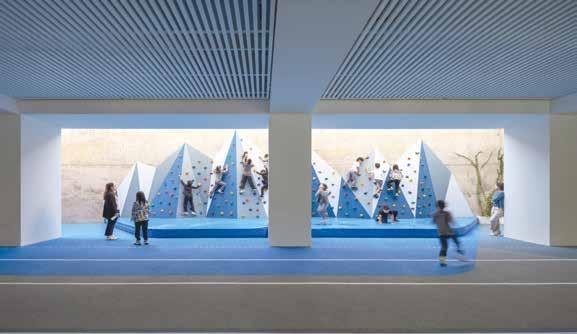
Movement is also a part of play time; it is the most improvisational part of learning, where children discover themselves and their surroundings through movement. Even though early childhood is the most egocentric period of human development, children learn to socialize through movement. They don’t play team sports, as this is too young an age to impose on structured play, but they use their imagination to invent their own play, engage their friends, and mimic their motions.
Learning with the body continues in later stages of development, even at ages when children shift from imaginative play to organized sports. As seen in Figure 4.11, for instance, grade 3 students are learning to climb in this outdoor playground. The climbing wall in this project is centrally located in the school’s campus, to create a focal point, where activities can be shared and learned.
Learning from a more “skilled other,” as discussed by Vygotsky, is an important consideration for the project. Being in the presence of more capable others,
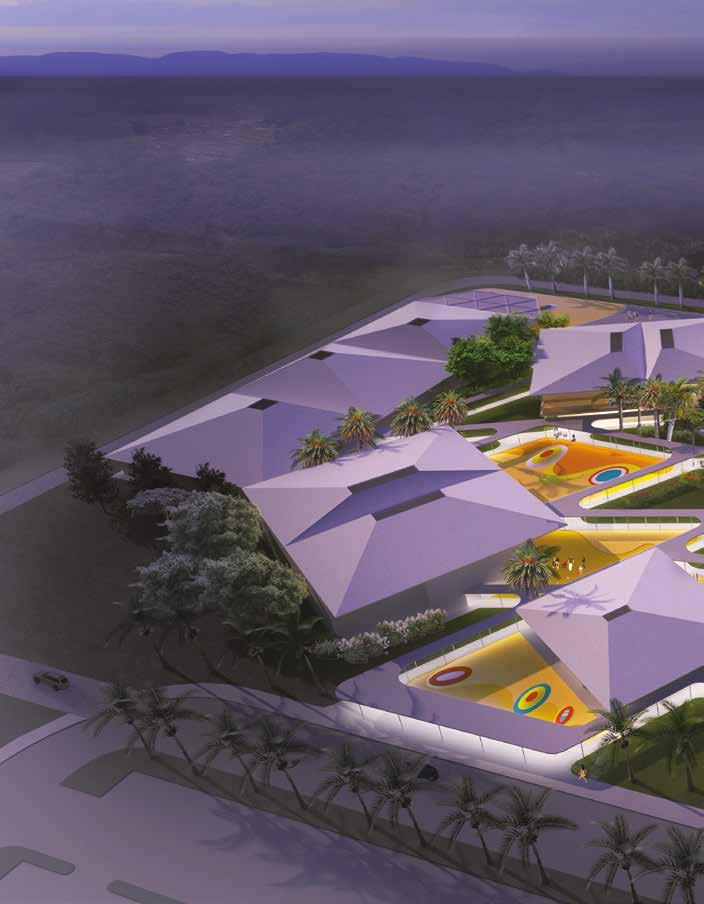

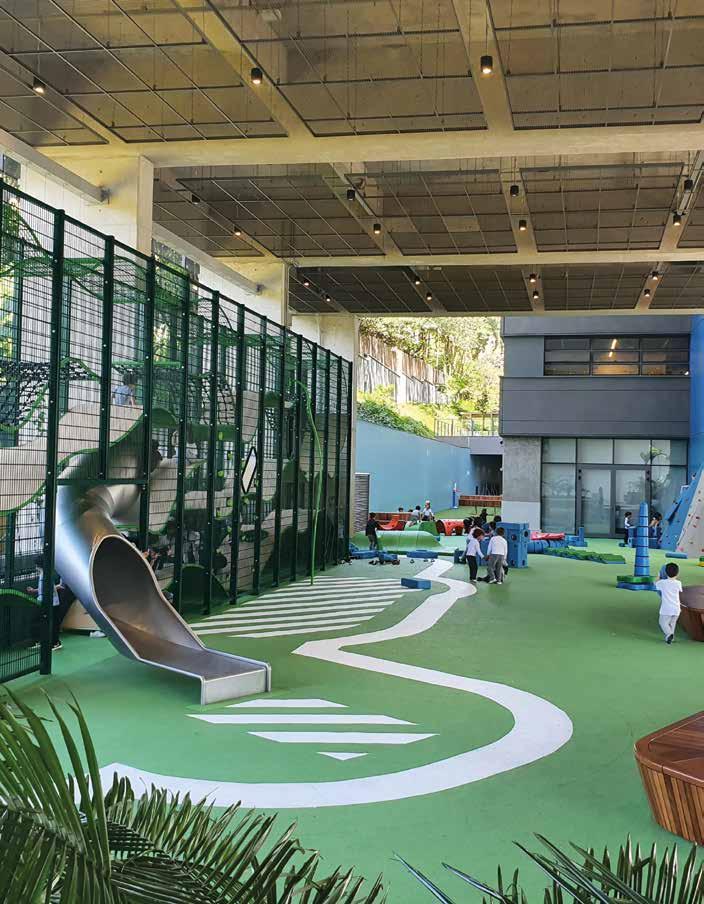
Play is immersed in all stages of our lives. We play with ideas, we play with things, we play with people. We can actively participate in the play, or we can watch other people play. It takes multiple forms; it can be spontaneous or structured. There are pickup games, sporting events, performing arts, role plays, imaginative plays, children’s plays, etc. In our adult lives, play is often associated with pastime recreational activities that are not “work”; we either work or we “play.” During early stages of our lives, on the other hand, it is not that binary. It is more visceral, and in fact, play is how we discover the world.
Friedrich Schiller defines play as a crucial human drive and he argues that it is only through play that we become human beings in the fullest sense of the word.1 According to Schiller, play drive reconciles the two opposing drives we have as humans: the sensuous and the formal. The sensuous drive comes from our physical existence, or the sensuous nature of human beings. For instance, hearing a sound at a moment and anticipating the next sound to follow, is the nature of our sensuous drive. The experience is tied to the moment and bound to change. On the other hand, formal drive grows from our rational nature and strives for permanence. According to Schiller’s philosophy, change versus permanence, sensational versus rational, feeling versus thinking, experience versus truth are the dualities between the sensuous and formal drives.
Play drive, on the other hand, reconciles the oscillations between these two opposing drives and establishes a point of equilibrium. The object of this equilibrium, according to Schiller, is “living form,” a concept “serving to designate all the aesthetic qualities of phenomena,” which he defines as “beauty.”2 Consequently, Schiller considers beauty to be the point of
5.1 (Facing page) Avenues São Paulo campus covered playground.
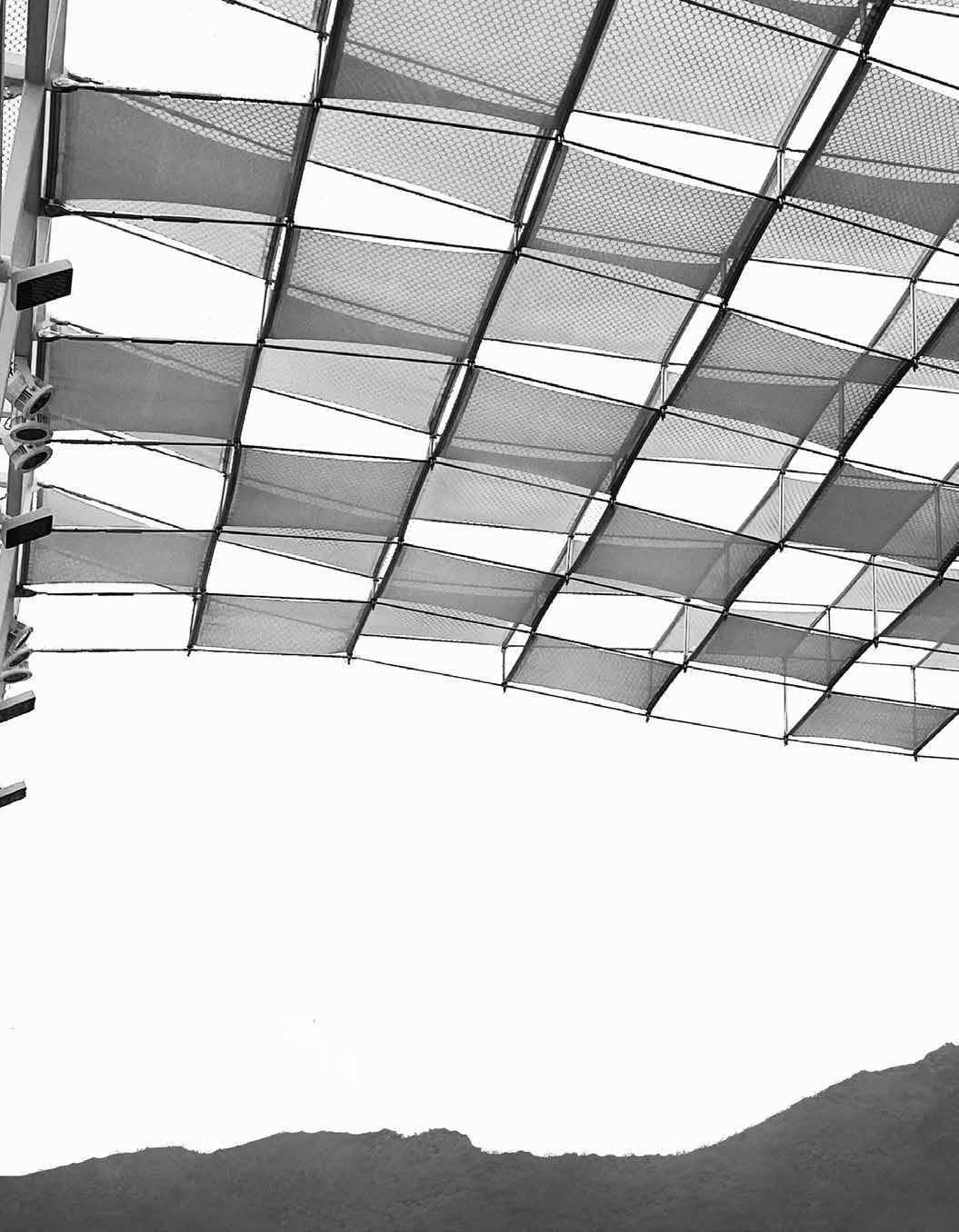
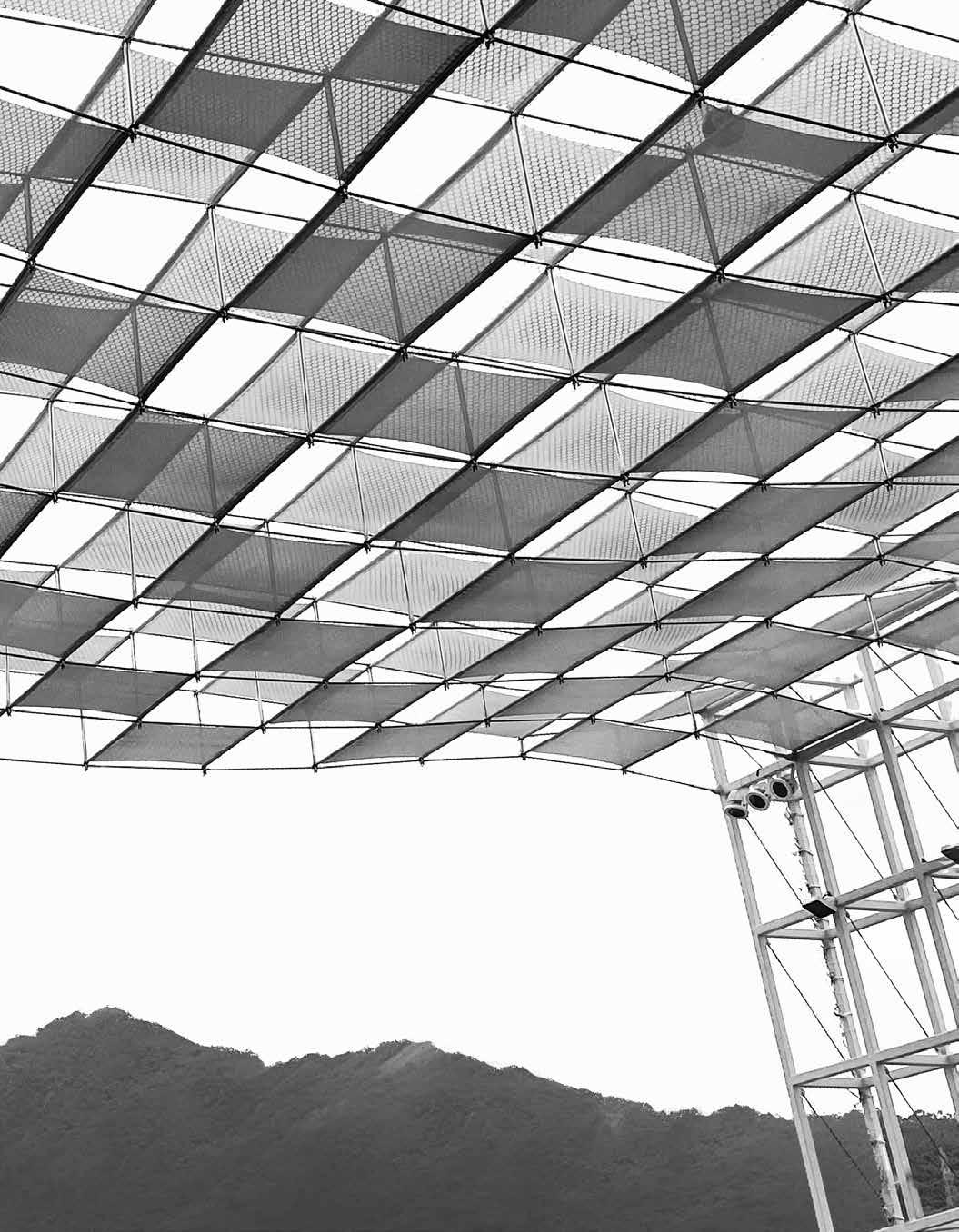
SOCIAL
ZONE OF DESIGNING FOR EMPATHY
LearningSituated Phenomenology Translation
ENVIRONMENT & CULTURE
After wandering through interdisciplinary ideas and architectural conjectures on designing for empathy, we should revisit the triangular map—the framework of the design explorations—presented in the first chapter.
In the discussion of development and empathy (refer to page 41), Dr. Higdon describes three vantage points: individual, social, and environment & culture. Education, linguistics, and architecture are the three key disciplines, overlaid on the edges in between the relevant vantage points. At the center of the triangle map, a zone is marked for “Designing for Empathy,” to illustrate the conceptual links from each discipline to the design conjectures in this book.
For instance, in the 416 Memorial Park project (refer to page 110), the importance of translations is underlined between the meaning of balance as a land-borne concept and the perception of it during a maritime disaster. The constant negotiations at sea between the forces of buoyancy and gravity challenge the axes of our deictic center, and to understand the loss of balance between these forces, and the meaning of a tilt that is not correcting itself at sea, requires translation. The conceptual thread of the project is to create spatial translations where one language takes the perspective of another.
The “theory of learning as a dimension of social practice,” as advocated by Lave and Wenger, recontextualizes schooling, and thus provides us another conceptual thread: education takes perspective of its context through situated learning.1 For instance, at the Avenues Shenzhen campus, the purposefully designed interpenetrations between the school and the Tanglang urban village creates active engagement with the community and the environment. By negotiating the lines between itself and its context, the design strategies
6.1 Designing for Empathy Map
